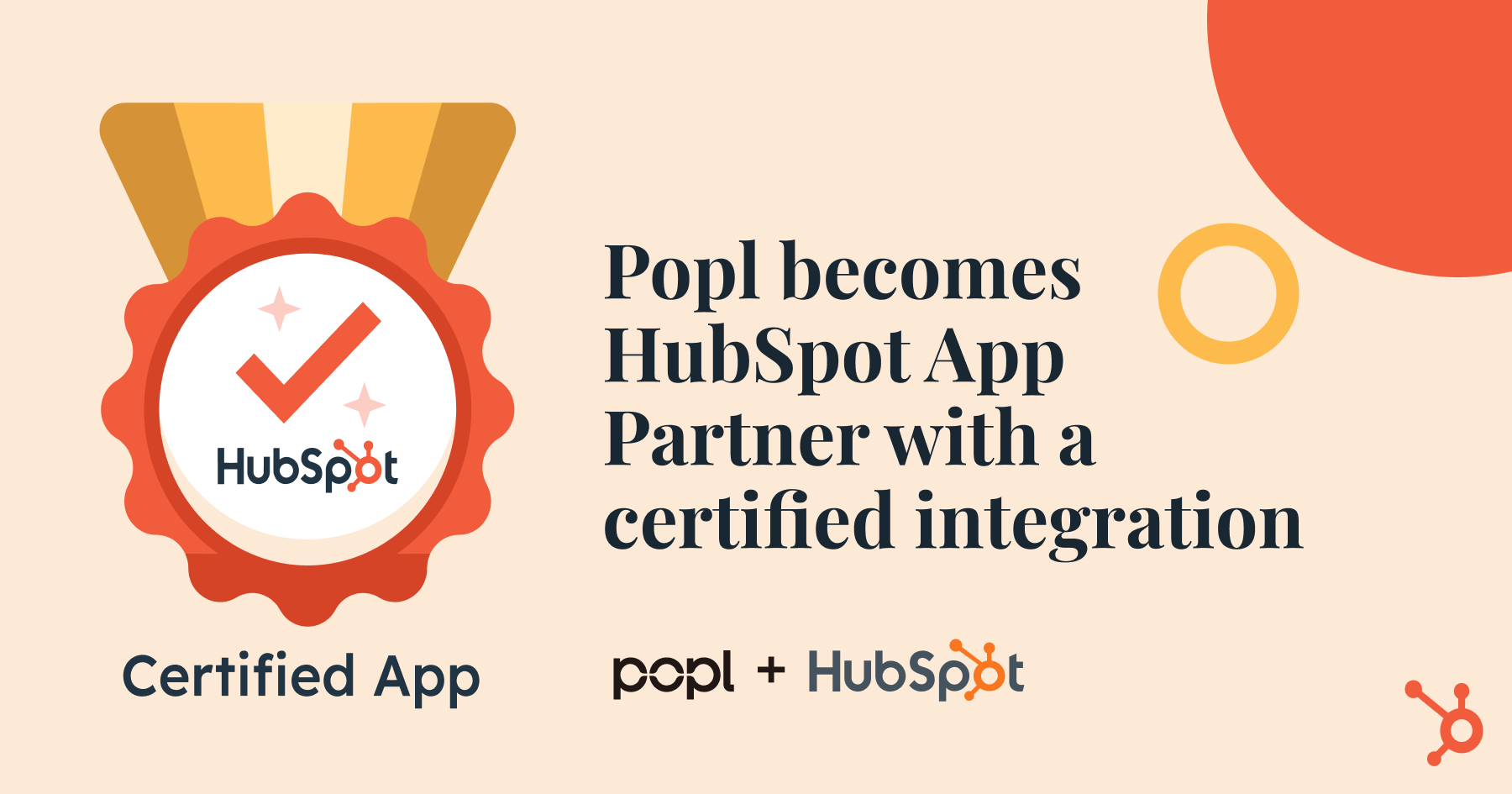In a world overrun by cold emails, AI-generated drip campaigns, and SEO saturation, the most valuable channel is the one your competitors overlook: human connection.
Yet, when it comes to budget allocation, In-Person Marketing often gets sidelined. Why? Because it's been historically chaotic, hard to quantify, and until recently, nearly impossible to standardize. But that's changing fast.
If you're leading GTM, field marketing, or revenue operations, here's exactly how to make the business case for investing in an In-Person Marketing Platform (IPM) like Popl, backed by ROI, operational efficiency, and strategic alignment.
1. Start With the "Why": In-Person Isn't Optional Anymore
The data is clear: in-person events are not just returning post-pandemic, they're exploding. Nearly 9 out of 10 planners expect in-person onsite and offsite meetings to increase in 2025[1]. According to the 2025 State of Events Report, 78% of organizers identify in-person events as their organization's most impactful marketing channel[2].
This shift isn't just a temporary trend. In 2023, 67.8% of attendees favored in-person events, but that number has grown significantly, with 83% of meetings planned for 2025 featuring an in-person component[3].
The challenge isn't if your team should show up—it's how you make the most of it. While digital marketing has matured with platforms like HubSpot, Salesforce, and Gainsight, most teams still manage their in-person efforts with paper cards, spreadsheets, and hope.
2. Expose the Hidden Costs of the Status Quo
Your exec team understands opportunity cost—so show them what's being lost:
- Time Waste: New lead capture systems must be configured for every event, with fragmented tools, logins, and training each time.
- Revenue Leakage: Manual post-event processing delays follow-up. Without speed to lead, warm conversations go cold.
- Data Gaps: Leads are often missing context like job title, intent, or segmentation tags—leading to lower conversion rates.
- Visibility Loss: When CRM data isn't enriched or standardized, it's impossible to prove event ROI or rep performance.
This isn't just inefficient—it's a competitive disadvantage. When your team is manually processing leads days after an event, your competitors with automated systems are already scheduling meetings and moving prospects through their pipeline.
"It's the equivalent of someone filling out a form on your website... and you doing nothing with it."
3. Redefine Success: From Leads to Pipeline
Most exec teams are done chasing MQL volume. What they want is pipeline clarity, sales activation, and revenue efficiency.
The data supports this shift in focus. Social networks generated 17.11% of total online sales in 2025, with the global social commerce sector growing at a 13.7% compound annual growth rate (CAGR) and projected to pass $1 trillion by 2028[4]. This demonstrates the power of social connection and engagement in driving actual revenue, not just lead volume.
An IPM platform transforms the funnel by:
- Capturing enriched leads in real-time
- Segmenting and scoring at the point of contact
- Auto-syncing to your CRM (no CSV uploads required)
- Triggering automated follow-ups and workflows
This approach doesn't just capture leads—it creates pipeline. By integrating your in-person marketing efforts with your digital systems, you create a seamless experience that converts at higher rates.
4. Frame the ROI with Operational and Financial Benefits
A comprehensive IPM platform delivers quantifiable value across three pillars:
Universal Lead Capture
- Works with any badge, QR code, or contact input
- Scales across events whether you exhibit or not
- Eliminates need for event-specific scanners or licenses
AI-Powered Lead Enrichment
- Auto-fills job title, email, LinkedIn, phone, and more
- Enables segmentation, scoring, and routing instantly
- Reduces need for tools like ZoomInfo or Apollo post-event
Digital Business Cards
- Maintains a modern, professional brand presence
- Replaces costly printed cards with sustainable tech
- Doubles as a lead collection tool in every conversation
The impact of these capabilities is substantial. User-generated content (UGC) influences 90% of shoppers' buying choices, with 87% of consumers believing UGC influences their buying decisions[4]. When your team can capture and leverage these in-person interactions effectively, they become a powerful source of influence and conversion.
5. Speak the CEO's Language: Control and Predictability
What every CEO wants:
- Predictable pipeline
- Lower cost per lead
- Shorter sales cycles
- Scalable systems
What an IPM platform delivers:
- One unified lead capture process across all events
- CRM-ready data that drives faster follow-up
- Attribution visibility for post-event ROI
- Data ownership—your leads are yours, not the event organizer's
This alignment between CEO priorities and IPM capabilities makes the business case compelling. Short-form videos are the top ROI driver for 71% of video marketers, with only 22% saying long-form video had the highest ROI[4]. This demonstrates the value of quick, efficient content—similar to how an IPM platform enables quick, efficient lead capture and follow-up.
6. The Social Proof: What the Data Shows
The evidence for investing in in-person marketing is compelling:
- Influencer posts inspire monthly purchases for 49% of consumers, with 86% of all consumers making at least one influencer-driven purchase a year[4]
- Short-form videos are the top ROI driver for 71% of video marketers[4]
- User-generated content (UGC) influences 90% of shoppers' buying choices[4]
These statistics highlight the power of personal connection and influence—exactly what in-person marketing excels at. When you combine this natural advantage with the right technology platform, you create a powerful engine for growth.
7. Close with a Strategic Vision
Pitch this not as a one-off tool, but as infrastructure.
Popl is defining the category of In-Person Marketing Platforms (IPMs) the same way Salesforce defined CRM. You're not just buying software—you're building a modern GTM motion that bridges the gap between marketing and sales, digital and real-world, chaos and control.
This infrastructure approach addresses a critical gap in most marketing technology stacks. While companies have invested heavily in digital marketing automation, the in-person component has remained largely manual and disconnected. An IPM platform closes this gap, creating a complete, integrated marketing and sales ecosystem.
Ready to Make the Case?
Here's a quick checklist you can present to leadership:
- We're spending 5-6 figures to attend events annually—but can't track ROI.
- Our follow-up is delayed by days due to manual lead processing.
- Our teams use different systems (or no systems) at every event.
- Our sales reps can't segment or qualify leads until it's too late.
- We have no visibility into which reps or events are performing best.
That's not just a problem. It's a competitive disadvantage.
Final CTA: Show, Don't Just Tell
Want to bring this home? Run a pilot with Popl at your next event. Track leads captured, time saved, and meetings booked—and present the numbers directly to your board.
Because in-person marketing doesn't need more budget. It needs better execution.
Schedule a demo → Turn real-world moments into measurable momentum.













